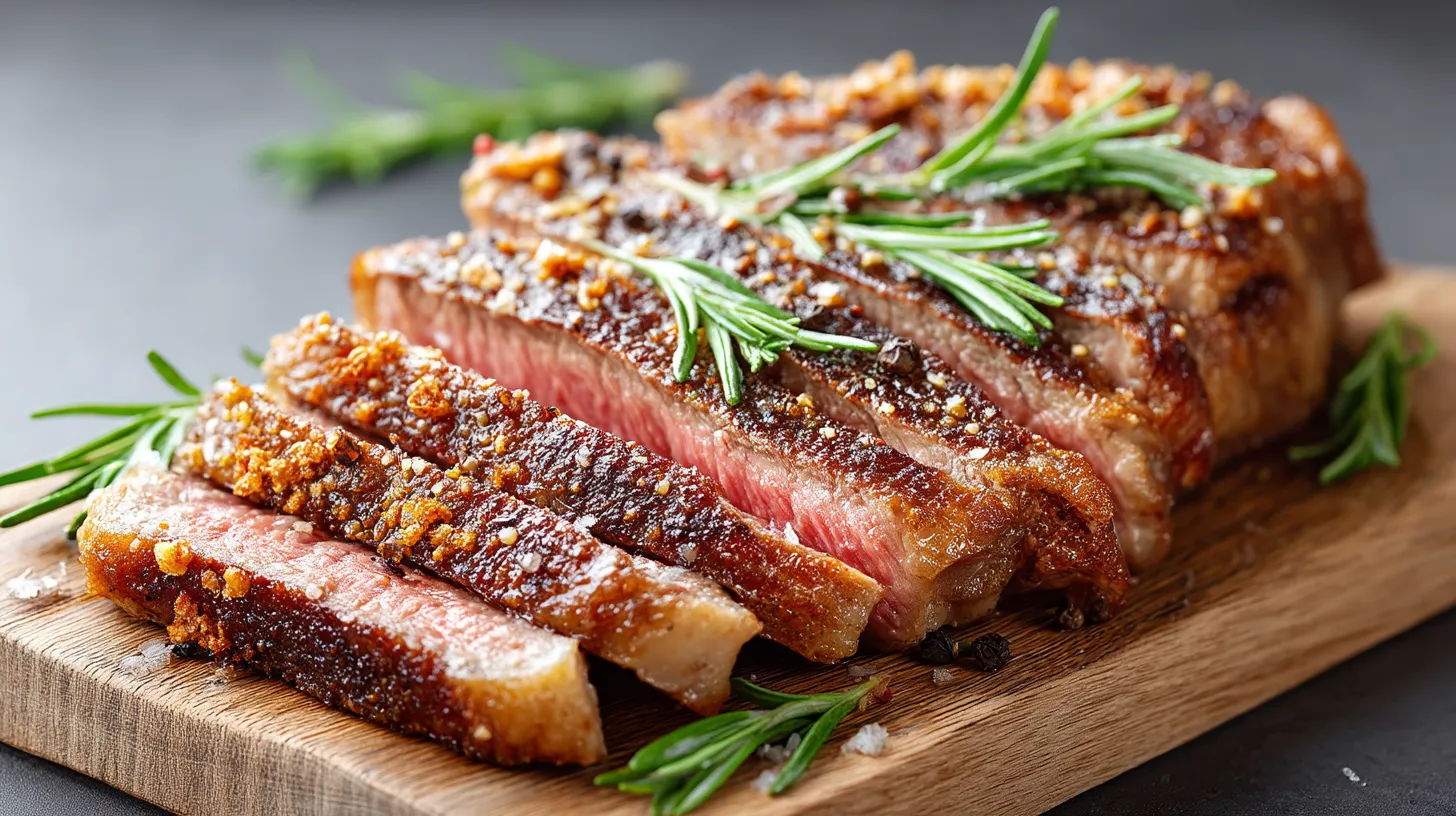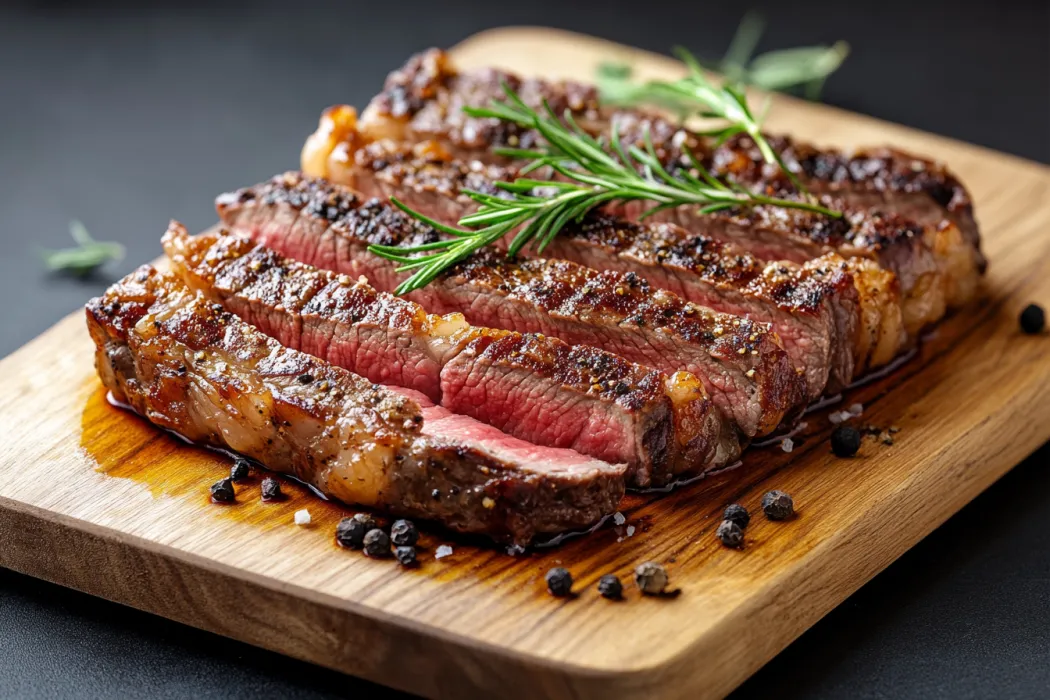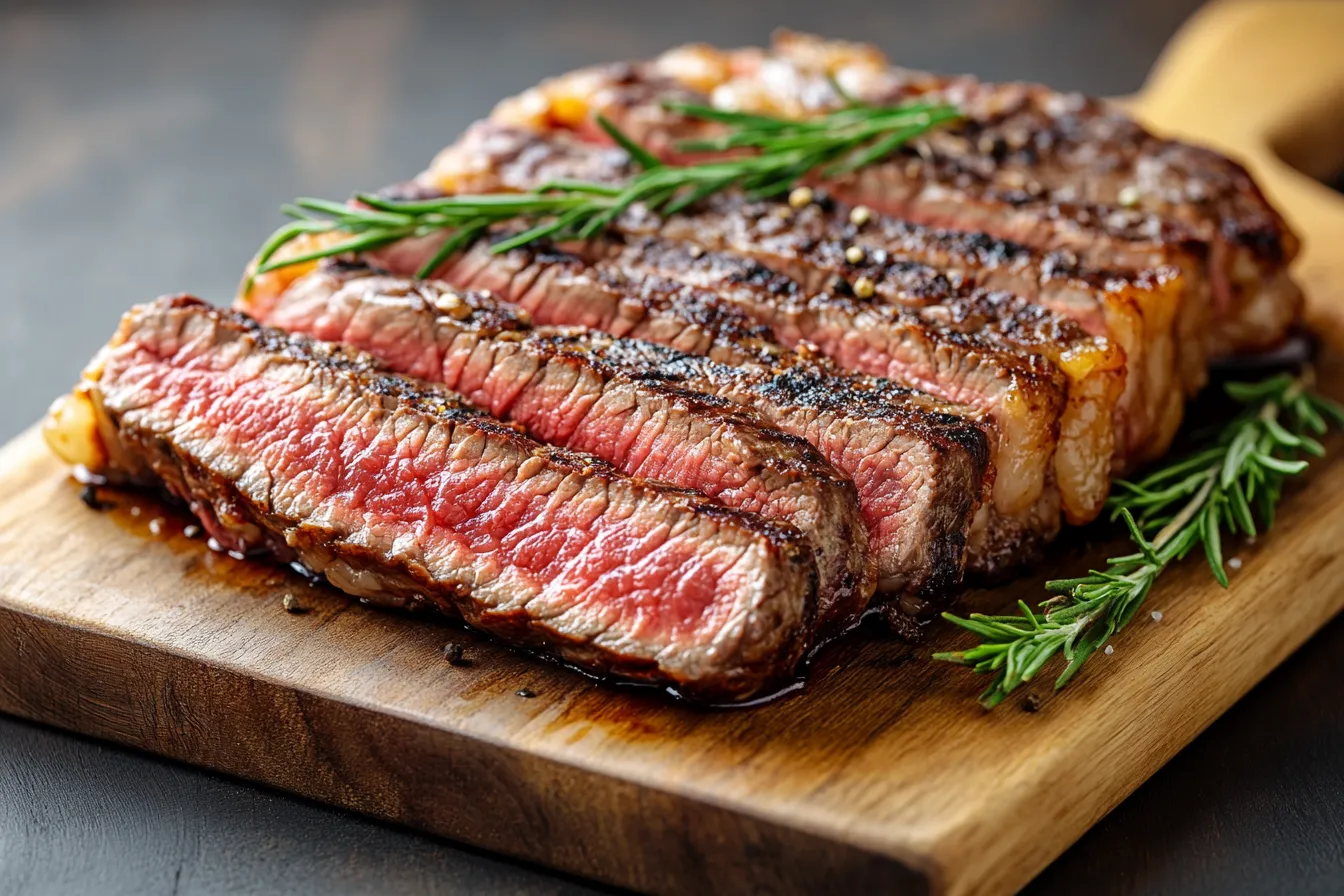 Save
Save
This ribeye steak recipe transforms an ordinary dinner into a restaurant-worthy experience with minimal effort. The technique focuses on developing that perfect crust while maintaining a juicy, tender interior that melts in your mouth. After mastering this method, you'll never want to order steak at a restaurant again.
I discovered this technique after years of disappointing home-cooked steaks. Now my family requests this exact preparation for birthdays and anniversaries, often saying it rivals steakhouses costing four times as much.
Ingredients
- Ribeye steaks Choosing the right thickness (1.5-2 inches) is crucial for achieving the perfect doneness without overcooking the exterior
- Kosher salt The larger crystals adhere better to the meat and create a superior crust
- Freshly ground black pepper Provides distinctive flavor that pre-ground simply cannot match
- High-smoke point oil Prevents burning during the high-heat sear that develops the crust
- Unsalted butter Creates the rich basting liquid that infuses flavor throughout the cooking process
- Garlic cloves Infuses the butter with aromatic goodness without overwhelming the meat
- Fresh herbs Thyme or rosemary complement beef perfectly and scent the butter as it browns
Step-by-Step Instructions
- Bring to Room Temperature
- Allow your steak to sit out for a full 30 minutes before cooking. This crucial step ensures even cooking throughout. While waiting, thoroughly pat the surface with paper towels until completely dry. This might require several passes. A dry surface is absolutely essential for developing that coveted crust. Season liberally with kosher salt and freshly ground pepper, pressing gently to adhere.
- Preheat Your Skillet
- Place your cast iron skillet over high heat for a minimum of 5 minutes until it begins smoking slightly. Cast iron's superior heat retention is ideal for steaks. The pan should be so hot that when you hover your hand a few inches above the surface, you can only hold it there for a second or two. Add your oil and watch it shimmer immediately. This extreme heat is essential for proper searing.
- Execute the Perfect Sear
- Gently place your steak in the hot pan, laying it away from you to prevent oil splatter. Resist the urge to move or peek underneath for at least 2 minutes. When properly seared, the steak will naturally release from the pan. If it sticks, wait another 30 seconds. Flip once and sear the second side. The crust should be deeply caramelized and almost mahogany in color.
- Butter Basting Magic
- Reduce heat to medium-high and add butter, garlic, and herbs. The butter will immediately foam dramatically. Tilt the pan slightly to pool the butter, then use a large spoon to repeatedly scoop and pour the aromatic butter over the steak. This technique bastes the meat with flavor while helping cook the edges. Continue for 1-2 minutes, moving the steak occasionally for even coating.
- Monitor Temperature Precisely
- Insert a thermometer into the thickest part of the steak. For medium-rare, remove at 130-135°F knowing temperature will rise 5-10 degrees during resting. Medium would be 140-145°F. The temperature is non-negotiable for perfect results. If your steak is particularly thick, consider finishing in a 375°F oven after searing both sides.
- Rest With Patience
- Transfer the steak to a wooden cutting board and allow it to rest uncovered for a full 10 minutes. This critical step allows juices to redistribute throughout the meat. Covering with foil will trap steam and soften your hard-earned crust. The waiting is difficult but absolutely essential. Use this time to prepare any finishing touches.
 Save
Save
My absolute favorite element is the garlic-infused butter that pools on the carving board. I often keep extra bread nearby to soak up every last drop of these concentrated flavors. My father taught me this recipe when I was twelve, and the smell of sizzling steak still transports me to those special cooking lessons in his kitchen.
The Science Behind Resting
The resting period allows protein strands that contracted during cooking to relax and reabsorb juices. Without proper rest, those flavorful juices would spill onto your plate instead of remaining in the meat. The internal temperature will continue rising about 5-10°F during this time through carryover cooking. This process completes the cooking without risking the dry exterior that would result from leaving it in the pan too long. For thicker cuts, rest up to 15 minutes for optimal juiciness.
Choosing The Perfect Ribeye
Look for steaks with abundant marbling throughout the muscle. These white flecks of intramuscular fat will melt during cooking, creating self-basting pockets of flavor and tenderness. Choose cuts at least 1.5 inches thick to allow proper searing without overcooking. Bone-in ribeyes cook more slowly near the bone and often provide more flavor, while boneless cuts offer easier carving. For special occasions, consider dry-aged ribeyes which have concentrated beef flavor from moisture loss during the aging process.
Elegant Serving Suggestions
Transform your perfectly cooked steak into a stunning presentation by creating a complete carving board display. Arrange sliced steak on a wooden board with roasted garlic heads, fresh herb sprigs, and perhaps a small ramekin of additional steak butter. Add color with roasted cherry tomatoes still on the vine or charred spring onions. For a dinner party, place the entire board in the center of the table and allow guests to serve themselves. This interactive presentation always generates conversation and appreciation.
Flavor Variations
While the classic preparation is perfect on its own, you can create variation through compound butters. Prepare these ahead by mixing softened butter with ingredients like blue cheese and chives, chimichurri herbs, or miso and sesame. Form into logs, chill, and slice medallions to melt over your resting steak. Alternatively, consider different finishing salts like smoked Maldon or truffle salt for subtly different flavor profiles. A light drizzle of aged balsamic can add sophisticated complexity without overwhelming the beef flavor.
 Save
Save
Recipe FAQs
- → Why should I bring the steak to room temperature before cooking?
Bringing the steak to room temperature ensures more even cooking from edge to center. Cold steaks tend to cook unevenly, with potentially overcooked exteriors before the center reaches desired doneness. Allowing 30-60 minutes at room temperature helps avoid this problem and promotes better browning for that perfect crust.
- → What's the best way to tell when my ribeye is cooked to medium-rare?
The most reliable method is using an instant-read meat thermometer inserted into the thickest part of the steak, looking for a reading between 130-135°F (54-57°C) for medium-rare. If you don't have a thermometer, you can use the finger test - medium-rare feels like the base of your thumb when touching your middle finger to your thumb.
- → Why is it important to rest the steak before slicing?
Resting allows the juices to redistribute throughout the meat. When steak cooks, the muscle fibers contract and push juices toward the center. Cutting immediately after cooking results in these juices flowing onto your plate instead of remaining in the meat. A 10-minute rest ensures a juicier eating experience.
- → What does 'slicing against the grain' mean and why is it important?
Slicing against the grain means cutting perpendicular to the visible muscle fibers in the meat. This shortens the muscle fibers, making each bite more tender and easier to chew. With ribeye, the grain direction can vary throughout the steak, so look carefully at each section before cutting.
- → Can I use olive oil instead of canola or grapeseed oil for searing?
It's not recommended to use regular olive oil for high-heat searing because it has a relatively low smoke point (around 375°F) and will burn, creating acrid flavors. Canola, grapeseed, avocado, or refined (not extra virgin) olive oil all have higher smoke points (400-500°F) making them better choices for the intense heat needed to develop a perfect crust.
- → What type of pan works best for searing a ribeye?
A cast iron skillet is ideal because it retains heat exceptionally well and distributes it evenly, creating the perfect environment for developing a flavorful crust. Cast iron can also go from stovetop to oven if you're using the reverse sear method. A heavy-bottomed stainless steel pan can work well too, but avoid non-stick pans which typically can't handle the high heat needed.
